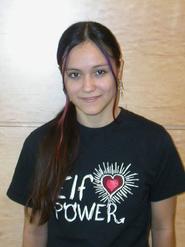
Heather Parker '07 (Cherry Hill, N.J.) is on the Hill this summer for astrophysics. She will study pulsating variable stars; stars which change their brightness over a given period. Parker plans to take pictures of her chosen stars with a CCD camera and measure the change in light output, as well as trying to understand why and how these stars pulsate. She will be advised by Peter Millet, the Litchfield Professor of Physics.
Pulsating variable stars are so called because they appear to literally pulse. Their brightness varies over a period of time that can be, depending on the star, anywhere from few hours to years. The variation in luminosity is due to a physical change in the size of the star, which appears to pulse as it expands and contracts. Parker will take exposures of her stars throughout their periods to measure their magnitudes, and will produce a set of light curves, graphs which depict a star's magnitude (or brightness) in relation to time. Her main tools include the computer program IRAF, which facilitates the conversion, reduction and analysis of the CCD images, and the 12" Schmidt Cassegraine telescope at Hamilton's Peters Observatory.
Parker, a physics major, is a first-time summer researcher. She wanted an astronomy project and was offered the opportunity to study either asteroids or variable stars; she chose the latter. Millet helped Parker design her own study and so, unlike many of her summer research peers, Parker has a summer project which is her own. "I feel like I've got a lot of freedom [with this investigation]," she says.
That does not mean that everything will be easy. Astronomy in a region which, as the story goes, gets as much cloud cover as the United Kingdom, is never going to be simple. Parker needs regular pictures over the periods of her stars, and clouds or thunderstorms could prevent that. She is also working with complicated technology: IRAF, she explains, "isn't user-friendly."
She is, however, passionate about physics and excited about her work. She loves summer research and plans to make this work the basis for her senior project. Parker is also considering submitting her data to AAVSO, a database project which banks observational data and makes them available to other researchers, or uses them to create star-charts.
Parker, a rising senior, is the vice president of the juggling club and a member of the student tech crew. She hopes to attend graduate school for a degree in astrophysics. "I really love it," Parker says of her discipline, where she can "look up at the entire universe – it's so mind-boggling."
-- Lisbeth Redfield
